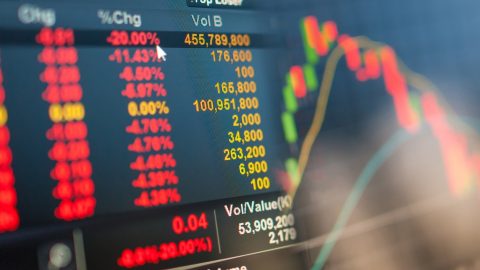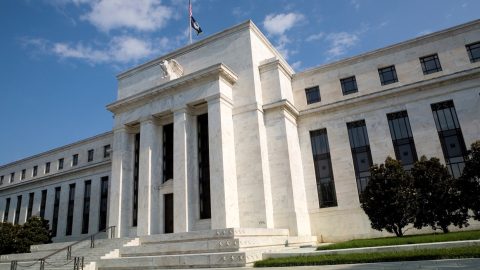Articles about “bonds”
Sell in May and go away?
Every year at the beginning of May, investors are faced with the question of whether they should leave the stock exchanges and take the profits generated up to that point, and return at a later date in autumn. But is the old stock market adage “Sell in May” still valid?
Financial Markets Monitor April: upside-down scenario
On 3 April, we held our monthly Investment Committee meeting. Only three weeks after the previous one – three weeks that were tightly packed with issues, as we can see in the performance data of the most important asset classes. Equities and high-yield bonds have lost value, whereas Eurozone government bonds and emerging markets bonds have recorded gains. An upside-down scenario, compared to previous months.

Financial Markets Monitor: we have stepped up the risk of our asset allocation by a notch
On 14 March our Investment Committee met, and as always, we started out on a discussion of our risk stance, i.e. our risk assessment. From my point of view, four findings of the discussion are worth bringing up here:
Equity investors’ interest rate fears may be overblown
Fears of rising interest rates are back. Was the recent 9% correction in global equities just a market blip, amplified by technical factors related to the trading of volatility products? Or something more serious – a regime shift signalling the end of the equity bull market as many have argued?
Market Monitor: After the market correction, confidence outweighs
The year 2018 had started on such a promising note – is what we all were thinking. But at the beginning of February, the market taught us a lesson. As a result, the discussions at our first Investment Committee of the year at the beginning of February were interesting ones.
Inflation worries burdening stock exchanges – part 2: the macro perspective
Equity indices have undergone a global correction in the past days. The Dow Jones index has shed more than 10% from its January high. What is the macro-economic reason for the correction?
Capital markets outlook for 2018: Will the party hold on?
2017 is drawing to an end, and the bottom line is positive. The outcome is significantly better than we had expected. Since the financial crisis in 2008, the global economy has never expanded more quickly and especially concertedly than in 2017. Also, inflation has surprised on the downside, falling short yet again of the expectations held by central banks and analysts.
US debt ceiling keeping the financial markets on their toes
The Trump administration should be keeping the financial markets on their toes in the coming weeks. Yet again, the issue is the government debt which will soon reach its statutory maximum.
Germany: is the economy about to face a hot summer?
The IFO business climate index calculated by the Munich-based IFO Institute is regarded as the most important German economic indicator. At 115.1, the value released for June last week was the highest since the launch in January 1991. It was also clearly above the value that had been expected by the financial analysts on average. The signs for substantial economic growth in Germany seem favourable.

A niche product with solid returns: hybrid and subordinated bonds with investment grade rating
Author: Christin Bahr, Product Management Securities Erste Group It has been half a year since the launch of the new hybrid bond fund. Reason enough for us to talk to Roman Swaton, Senior Fundmanager.
The global economy based on the Goldilocks principle
The global economy is growing moderately, inflation is low, and the monetary policy is loose. This environment supports many asset classes from bonds to equities. The political uncertainty has been absorbed rather well so far too. Will this situation last?
Curves (part 3) – peaks and troughs
Investing for the long or the short term? This is the question bond investors ask. In this blog, we will have a look at German government bonds with a remaining time to maturity of two years (2Y; short) and ten years (10Y; long). More specifically, we are interested in the yield differential between the long- and the short-term interest rates. The technical term here is the “slope of the yield curve”.

Curves (part 1) – not only a topic for race drivers
Have you ever been to the Monte Carlo F! Grand Prix? If so, you may have witnessed the problem of turning into a curve too late. The race car hits the crasher barrier faster than the driver can react, and a lot of money has to be thrown at the repair job.
Emerging markets bonds in demand
Economic growth in the emerging markets has picked up substantially, while that in the industrialised economies has been rather stable. This has led to an increase in the growth differential in the emerging markets’ favour. Investor demand for emerging markets bonds has been on the rise in search of higher yields and interest rates.
The comeback of the Emerging Markets
Interview with Christian Gaier, Senior Fund Manager for emerging markets government bonds Emerging equity and bond funds have borne the brunt of the consequences of the global uncertainties in the past years. Wars and conflicts in the region, slumping commodity prices (especially oil), and fears of an interest rate reversal in the USA have caused […]
Bond investments in the current environment
After the recent, rather substantial corrections on the bond markets many investors were wondering: “Can or should I still invest in bonds or bond funds in view of possibly rising interest rates?” Let’s first have a look at the bonds with the highest quality within the Eurozone, i.e. German government bonds. Where have the prices […]
Corporate bonds with short maturities
Bond investors are faced with a difficult environment. Do corporate bonds offer the chance of a halfway decent yield? Stampfl: The statement that bond investors are faced with a difficult environment is actually an erroneous one. A balanced portfolio consisting of bonds from the peripheral countries and the core countries across all sectors would have […]
China – the biggest economy in the world
The new normal The importance of China for the global economic and financial system continues to grow at a rapid pace. Last year the country set a new milestone by becoming the world’s biggest economy. The total value of goods and services produced in a year exceeds that of the United States. Thus, at 30% […]
The investment segment of emerging markets corporate bonds has matured
For many institutional investors corporate bonds from emerging markets issuers have become an important instrument of portfolio diversification. Our fund management team estimates that a portfolio made up of 70% investment grade bonds and 30% high-yield bonds can yield an average 5% in the medium term. This sort of yield can hardly be achieved with […]
The confrontation of the doves
The most important central bank in the world, i.e. the US Fed, made an announcement yesterday that attracted a large deal of attention from investors. The bank withdrew its assurance to remain “patient” before the Fed funds rate would be increased. This paved the way for a possible abandonment of the zero interest rate policy, […]
Two canaries in the coalmine
The US dollar has appreciated significantly vis-à-vis the euro in the past months. For this trend to continue, at least two developments would have to be in place. Firstly, the US Fed would have to abandon its zero interest rate policy; and secondly, the ECB would have to remain on its path of negative interest […]
Dividend yield beats bond yield
The share price performance in emerging Europe, i.e. Poland, the Czech Republic, Hungary, Russia, Turkey, and since most recently again, Greece, has not been overwhelming in the past years. Since the middle of 2011 the MSCI Emerging Europe, the most important index for the region, had been locked into a sideways movement, which was topped […]
Boon and bane
The driving topics on the financial markets are the stabilisation of the oil price, mixed economic indicators globally vs. positive economic indicators for the Eurozone, the temporary decline in escalation risk, and the expansive central bank policies.
The effects of the ECB policy
Since the cutting of key-lending rates to almost zero in the Eurozone did not suffice to keep the inflation expectations at their long-term target of slightly below 2%, the ECB Council decided in January to expand the central bank money supply until the accomplishment of the target was foreseeable. The possible effect on the financial […]
Light and shadow
The environment has become a bit brighter in the past weeks. In addition to the improvement of the economic environment in the Eurozone and Japan, more and more central banks loosened their monetary policies. For example, on 12 February the central bank of Sweden (Riksbank) surprisingly cut its key-lending rate to -0.1% and announced to […]



















